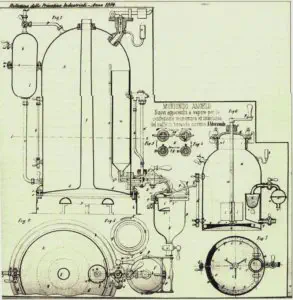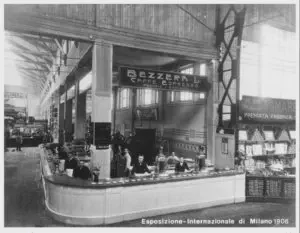Espresso machines: their invention, their coffee

Discover the captivating history of the espresso machine, born from the ingenuity of Angelo Moriondo in 1884, then perfected by Luigi Bezzera. This article guides you through the keys to making a perfect espresso and highlights the major innovations that have transformed this preparation into a true culinary discipline.
An espresso machine prepares coffee by forcing water under pressure through a puck of ground coffee in a filter. This method produces a thick and concentrated coffee called espresso. The invention of this machine was a turning point in coffee history, giving rise to more than a century of innovations and patents.
The first espresso machine was patented in 1884 by Angelo Moriondo of Turin, Italy, and presented at the Turin General Exposition the same year. He obtained a certificate for his invention titled New steam machinery for the economic and instantaneous confection of coffee beverage.
In 1903, the machine was improved and re-patented by Luigi Bezzera (US726793 A). The patent was then purchased by La Pavoni, which launched commercial production in Milan.
Drive Mechanism
Subsequently, various technologies emerged, optimizing pressure, temperature and extraction consistency.
Espresso Coffee
Rules to Follow for a Perfect Espresso
Preparing a quality espresso is an art. Each cup is unique and depends on numerous parameters: grinder setting, coffee quantity, preinfusion, extraction time…
For a successful espresso:
- Extraction time: 23 to 26 seconds
- Volume: 36 to 40 mL with a beautiful crema
To discover all the variables that influence your coffee, check out this article.
What is crema?
Crema is the thin hazelnut-colored layer on an espresso. Composed of oils, proteins, and sugars, it preserves the aromas and maintains the coffee’s temperature.
An ideal crema should be dense, uniform, smooth, and bubble-free, with a thickness of a few millimeters.
Extracting a perfect espresso
Here’s a slow-motion video showing the ideal extraction performed with a bottomless portafilter (without spout), offering a more aesthetic visual and often more crema.
For beginners
If you’re just starting out, this video will give you the essential basics to successfully make your first espresso.


